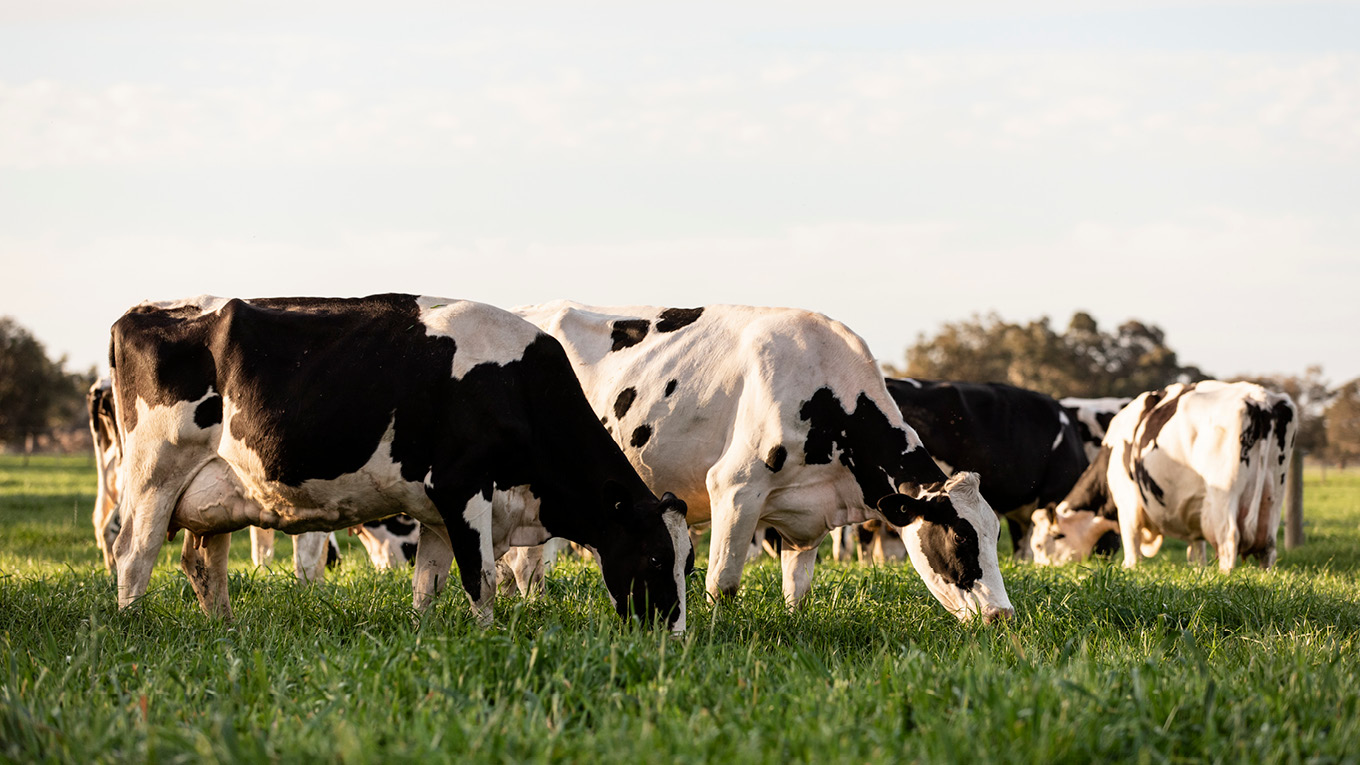Building a Feed Wedge
A feed wedge simply describes having each paddock on the farm at a different stage of regrowth, with differing amounts of pasture available in each paddock.
It is often tempting during autumn to move cows onto pasture and start grazing too early. In most seasons, farmers will be feeding silage from the previous spring or other purchased fodder during summer and early autumn while waiting for the autumn feed to start growing.
Pasture across the whole farm will start to grow at the same time following the autumn break and will then reach the optimum stage to graze at a similar time. However, the herd will need to graze this feed on a staggered basis over a set period of time. Therefore, practical management has to take over and a compromise needs to be found. This will mean grazing some paddocks earlier than the ideal growth stage, with the target being to graze the final paddock on the farm before feed is wasted either by decaying leaves from canopy closure or when the fourth leaf starts to emerge on ryegrass plants and the first leaf starts to die.
Watch consultant Phil Shannon give some practical tips on managing the autumn break using the FPFP principles in this short video
Supplementary feeding
Getting supplementary feeding levels right is important when grazing paddocks earlier than ideal, because these paddocks are at risk of overgrazing when there is less pasture available.
The graph below illustrates the variation in the availability of grazed pasture on a typical spring calving, pasture-based dairy farm in south-west Victoria. It highlights the importance of supplement use and managing pasture correctly.
The graph curves and changes will differ depending on where the farm is and what type of calving system it is operating under, but the same principles apply regardless of this when it comes to supplement use and pasture management.
The feed wedge
A feed wedge will start to be established once the whole farm has been grazed once.
After completing the first grazing rotation and returning to the first paddock that was grazed, an assessment will need to be made as to whether grazing should speed up (offer more area per feed to the herd) or slow down the rotation length (offer less area per feed to the herd) and then supplement accordingly.
At this stage, it is important to avoid doing any long-term harm to the productivity of the pasture over the next few months. Therefore, grazing the sward too hard should be avoided, always maintaining a post-grazing residual height of four to six centimetres. Newly-sown paddocks are particularly prone to overgrazing, as the new pasture is generally more palatable and leafy and there is is no established residual or stubble from a previous grazing to help prevent cows grazing below 4cm.
In keeping with the principles of good grazing management and Feeding Pasture for Profit, care should be taken to avoid grazing pastures until they are at the 2.5 to three-leaf stage of regrowth or canopy closure – whichever occurs first – if at all possible.
Grazing earlier than the two-leaf stage has been shown to not only have a negative effect on plant growth, but also on rumen health. This is because these pastures contain less neutral detergent fibre and less physically effective fibre, which can lead to rumen health issues , particularly at higher levels of grain feeding.
Some compromises may need to me made in autumn when building a pasture feed wedge, but it should be possible to achieve this and set the farm up well for the season ahead.



